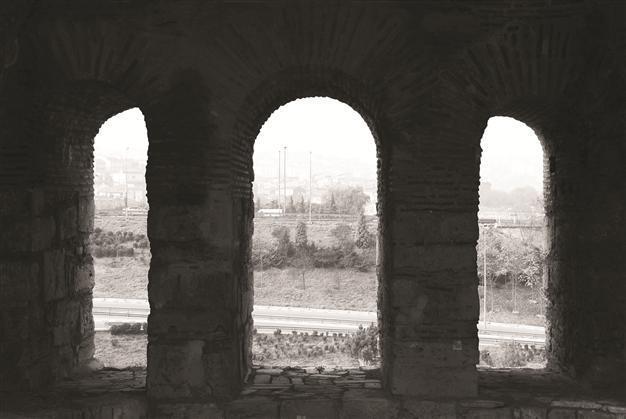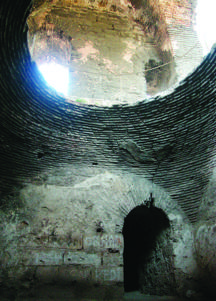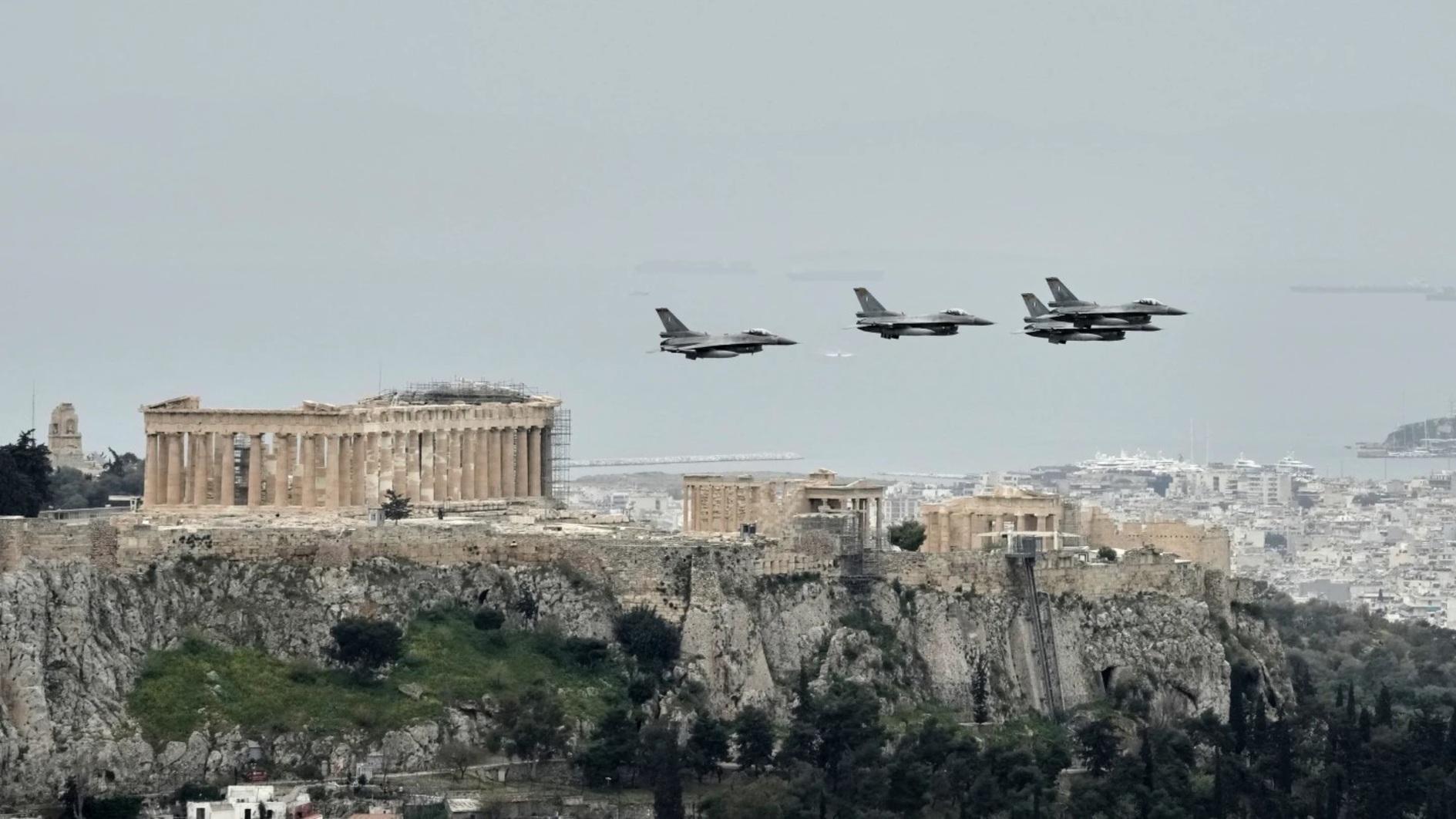Underground cells Ottoman Dungeons
NIKI GAMM ISTANBUL - Hürriyet Daily News

This photo shows the Anemas Dungeon, which is more like a prison than a dungeon and was built in Byzantine times to house prisoners who had unsuccessfully revolted against the Byzantine. emperor.
When we think of dungeons, we think of dark, underground cells in which prisoners were kept during the Middle Ages. While the Ottomans used the word “zindan,” these didn’t necessarily have to be underground. In Istanbul, the first Ottoman prisons or zindan were originally built by the Byzantines.The best known still exists today at Yedikule, and was part of the fortress gate in the Theodosian land walls. The gate is also known as the Golden Gate because it was where the Byzantine emperor used to enter the city after a victory or for a coronation. The rooms in part of the gate were used for the prison under the Ottomans and quite a few “guests” spent time there.
The first person executed at Yedikule was Çandarlı Halil Paşa who was Fatih Sultan Mehmet II’s grand vizier but who was dismissed two days after the conquest and, according to some sources, immediately executed. He was charged with having taken bribes from the Byzantine emperor to prevent the Ottomans from conquering the city. His entire estate was confiscated and most of his family was imprisoned with him. He thus became the first Ottoman grand vizier to be executed. A second grand vizier, Mahmud Paşa Andelovic, was also executed on the orders of Fatih Sultan Mehmet II.
 The most distinguished was Sultan Osman II, who was imprisoned there after a Janissary revolt. In theory, no Ottoman sultan’s blood could be spilled. However, when the executioners came to strangle Osman, he put up such a fight that one of the soldiers struck him in the back with an axe. His caftan has been preserved with a bloody slit in it. Another soldier is then supposed to have grabbed him by his testicles and caused such pain that they were able to strangle him easily.
The most distinguished was Sultan Osman II, who was imprisoned there after a Janissary revolt. In theory, no Ottoman sultan’s blood could be spilled. However, when the executioners came to strangle Osman, he put up such a fight that one of the soldiers struck him in the back with an axe. His caftan has been preserved with a bloody slit in it. Another soldier is then supposed to have grabbed him by his testicles and caused such pain that they were able to strangle him easily. Another grand vizier, Deli Hüseyin Paşa, was strangled at Yedikule in 1659 on the orders of Köprülü Mehmet Paşa. The latter was afraid that he might be replaced by Deli Hüseyin Paşa because he was so successful as a grand admiral and governor.
Ambassadors imprisoned
A number of foreign ambassadors were imprisoned in Yedikule. For example, the Russian ambassador Obresko was put there when war broke out with Russia during the reign of Sultan Mustafa III (r. 1757–1774). He only got out of the prison when the other ambassadors petitioned the sultan to free him as he had become very ill. He was freed, but confined to a house in the Yedikule area.
The French charge d’affaires was imprisoned in Yedikule in 1789 when Napoleon invaded Egypt, in spite of the capitulations regulating trade and other affairs between the Ottoman Empire and France.
The Anemas Dungeon is more like a prison than a dungeon and was built in Byzantine times to house prisoners who had unsuccessfully revolted against the Byzantine emperor. It is part of the land walls on the west side of the city where they begin to descend to the Golden Horn. Anemas had 14 cells and two basement floors, although today only one remains. The two lower floors had no lighting, but the upper floor was illuminated through openings in the western wall. Its name derives from a Byzantine general of Arab origin, who was imprisoned there after he unsuccessfully tried to topple Alexios I Comnenus (r. 1081-1118). Later, four Byzantine emperors were to be imprisoned there and Savcı Bey, the son of Sultan Murat I (1362–1389), was housed here. Although it is known from Ottoman sources, how it was used after the conquest is unknown. Today it has been restored by the Fatih municipality as a tourist attraction.
One of the Ottoman prisons is where the so-called Zindan Kapısı is along the Golden Horn very near Rüstem Paşa Mosque at Eminönü. The remains of one of the walls are all that we have left today.
On the other side of the Golden Horn was the Tersane Zindanı (Shipyard Dungeon) which was located inside the complex built as the headquarters for the Ottoman fleet. Much of what we know about it comes from the memoirs of Baron Wenceslaw Wratislaw who was the youngest member of an Austrian embassy sent to Istanbul in 1591. He describes in detail what it was to be cast into the Tersane prison after the Austrian ambassador was accused of having sent secret assessments of the Ottoman plans, strengths and weaknesses to the Austrian emperor. There were three buildings; one was a large square building several fathoms high, (a fathom is slightly under two meters), for the prisoners who were artisans and craftsmen who worked on boats; one for common prisoners and held about 700 convicts who were used to row the Ottoman galleys; and a third served as a hospital. The prisoners were chained and had nothing to sleep on except what rags could be gathered from previous prisoners.
 The scariest dungeon
The scariest dungeonBy far the scariest of dungeons was the Black Tower, the largest tower in Rumeli Hisarı, the fortress Fatih Sultan Mehmet had built on the Bosphorus. It is also known as the Saruca Tower after the pasa who was assigned to see it built. The tower is 28 meters high and has nine floors. In Wratislaw’s memoirs, we learn just how awful conditions were. Being thrown in the Black Tower was one of the worst things that could happen to a prisoner, for no one was supposedly allowed out except to be buried. The prisoners were lodged in a room that had no outside windows and the only way one could tell when the days changed was by the changing of the guard. Foreign prisoners were usually held here. They were a group of 22, put in a small room with four other prisoners who had been there from before.
In all fairness, the situation in which the Austrians and other prisoners found themselves was little different from that which pertained in European countries about the same time.
















